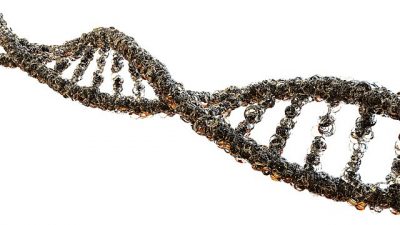African DNA: Humanity’s Deepest Roots & Cradle of Diversity

DNA Strand (Image by Cezary from Pixabay)
The Science of Diversity
Scientists agree: every living human can trace their origins back to Africa. Fossils, archaeology, and genetics all confirm it. Modern humans first appeared here over 200,000 years ago.
But what makes Africa’s DNA remarkable is not only its age. It is also the deepest, richest, and most diverse genetic heritage on Earth. While populations outside Africa share only fragments of this diversity, Africans preserve the widest branches of humanity’s genetic tree. This makes African DNA both the foundation of our shared past and a gateway to future medical discoveries.
Highest Genetic Variation
Humans are 99.9% genetically identical. The tiny 0.1% accounts for the differences that make us unique. Africa holds the widest range of this variation—far greater than in Europe, Asia, or the Americas. Why? Because humans have lived in Africa the longest. Over time, more lineages and mutations built up, creating a vast genetic library. When small groups of humans left Africa 60,000–70,000 years ago, they carried only part of this diversity. In short, non-African DNA represents just a few branches cut from Africa’s immense ancestral tree.
Genetic studies track maternal ancestry through mitochondrial DNA (mtDNA) and paternal ancestry through Y-chromosomes. In Africa: maternal lineages include L0, L1, L2, L3, and many sub-branches. Paternal lineages include A and B haplogroups, the oldest in the world. Outside Africa: most people belong to just two maternal branches—M and N—both offshoots of L3. Paternal lineages mostly descend from one African branch known as CT.
This means Africa holds at least 7–8 major ancestral branches, while other continents carry only a few. African DNA is not just older—it is richer and more varied than anywhere else.
Africa’s diverse environments—from deserts to rainforests—shaped powerful genetic adaptations. These include: Malaria resistance: Traits like the sickle cell variant and Duffy-null allele evolved in Africa; Lactose tolerance: East African pastoralists independently developed the ability to digest milk, separate from Europeans; and Skin pigmentation: Africa preserves the widest spectrum of pigmentation genes, tuned to different sunlight levels.
These adaptations are more than history. They show how African DNA carries answers to survival challenges that shaped humanity.
Most global genetic studies focus on Europeans. This leaves African DNA underrepresented, even though it contains keys to understanding diseases, drug responses, and global health risks. Projects like H3Africa and the African Genome Variation Project are now working to bridge this gap. Their findings could transform medicine for all people.
Without Africa, the story of humanity is incomplete. The San of Southern Africa preserve lineages stretching back further than any other population. Nilotic groups show unique height-related variants. Every African community carries a vital chapter of our shared human story.
This is the striking truth: the genetic diversity within Africa is greater than the diversity between “Africans” and “Europeans.” This means racial categories are too simplistic. Humanity is one family, with roots deeper and more connected than stereotypes allow. Africa proves it.
African DNA is not simply “different.” It is the blueprint of humanity—our oldest memory, our widest library of genetic variation, and our greatest hope for scientific breakthroughs.
As researchers continue to map African genomes, the picture grows clearer. To understand the human journey—past, present, and future—we must begin, and return, to Africa.
Recommended:
White-Washed: The Missing Black Populations of North Africa
Vanishing Echoes: Black Populations Are Disappearing
